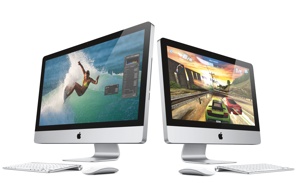Chalk another win up for the iPad, iPhone and, I suspect, for the MacBook Air. Boingo Wireless (http://www.boingo.com), a provider of software and services worldwide, has released its Wi-Fi Snapshot, a data-driven infographic that provides detail related to significant trends seen among Wi-Fi users from its managed network of 60 airports and aggregated network of hundreds of thousands of hotspots worldwide.
Mobile devices (smartphones and tablets) surpassed laptops as the most widely carried Wi-Fi device in airports, reaching 58.9% of all devices in June. Mobile devices passed the 50% mark for the first time in February 2011.
The overall size of the Wi-Fi device market has increased fivefold in the last five years, with laptops doubling overall while the explosive growth of smartphones/tablets constituted the bulk of the growth.
iOS has a commanding market share of mobile devices actively using Wi-Fi in those same venues, representing more than 83% of mobile total. Android more than tripled its market share from 2010, but is still a distant fourth place to iPhone, iPad and iPod Touch devices.
Data consumption among mobile devices continues to increase both on a monthly basis and on a per-minute basis. This points to an increase in higher bandwidth activities that will likely test the limits of some users’ tiered 3G data plans.
“Given the latest numbers, I think it’s safe to say 2011 is the year Wi-Fi became an essential part of mobile Internet connectivity,” says Dawn Callahan, vice president of consumer marketing for Boingo Wireless. “Since the launch of the iPhone in June 2007, we’ve seen a marked growth trend for non-laptop devices, but the exponential growth in iPhones and iPads in the last year pushed mobile devices past laptops, showcasing just how disruptive the trend is.”
The data used for the Wi-Fi Snapshot comes from web analytics reporting for more than 60 airports in North America and Europe, as well as monthly network connect data from Boingo’s customers who use non-laptop devices at more than 400,000 hotspots around the world.
— Dennis Sellers


